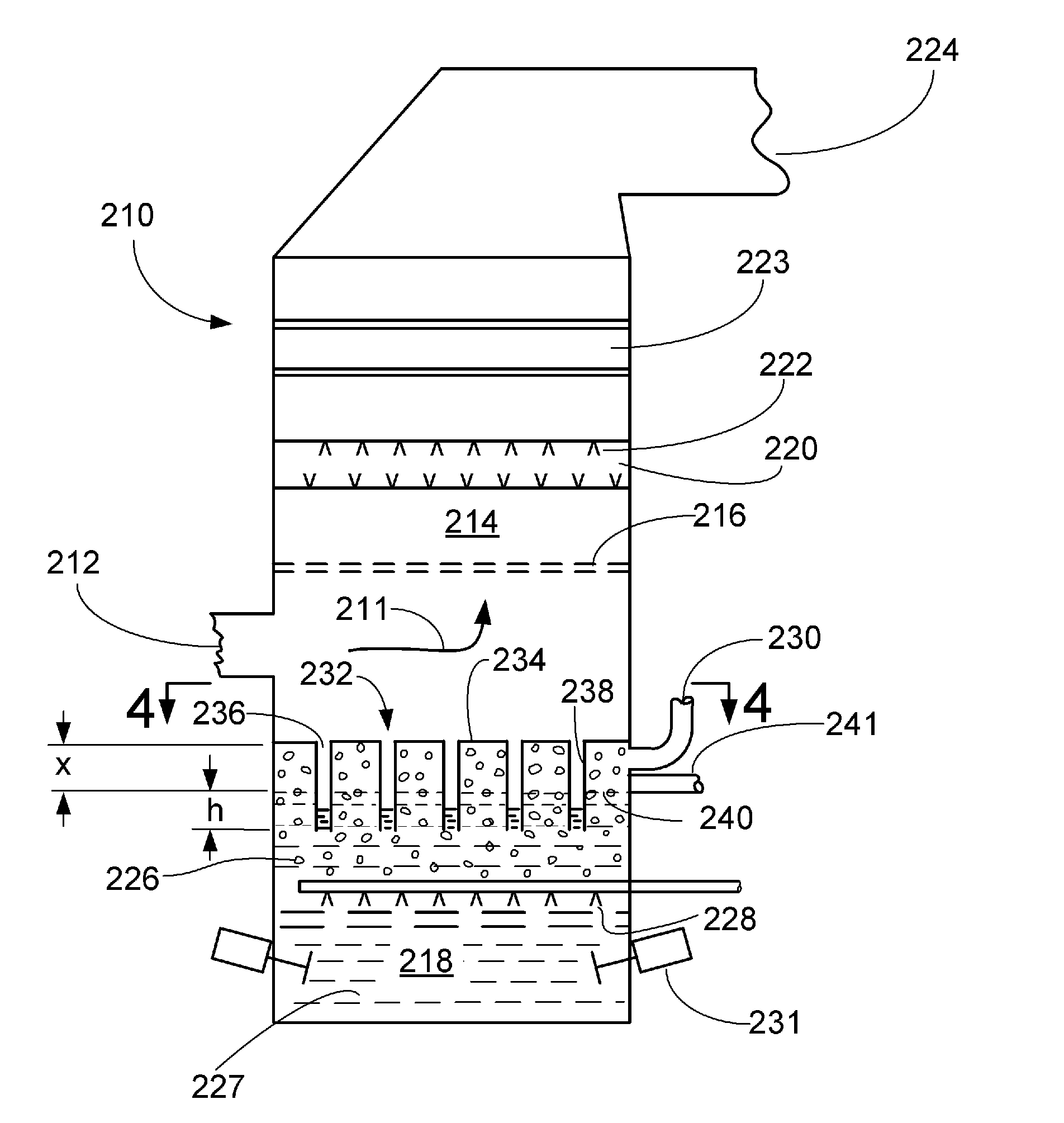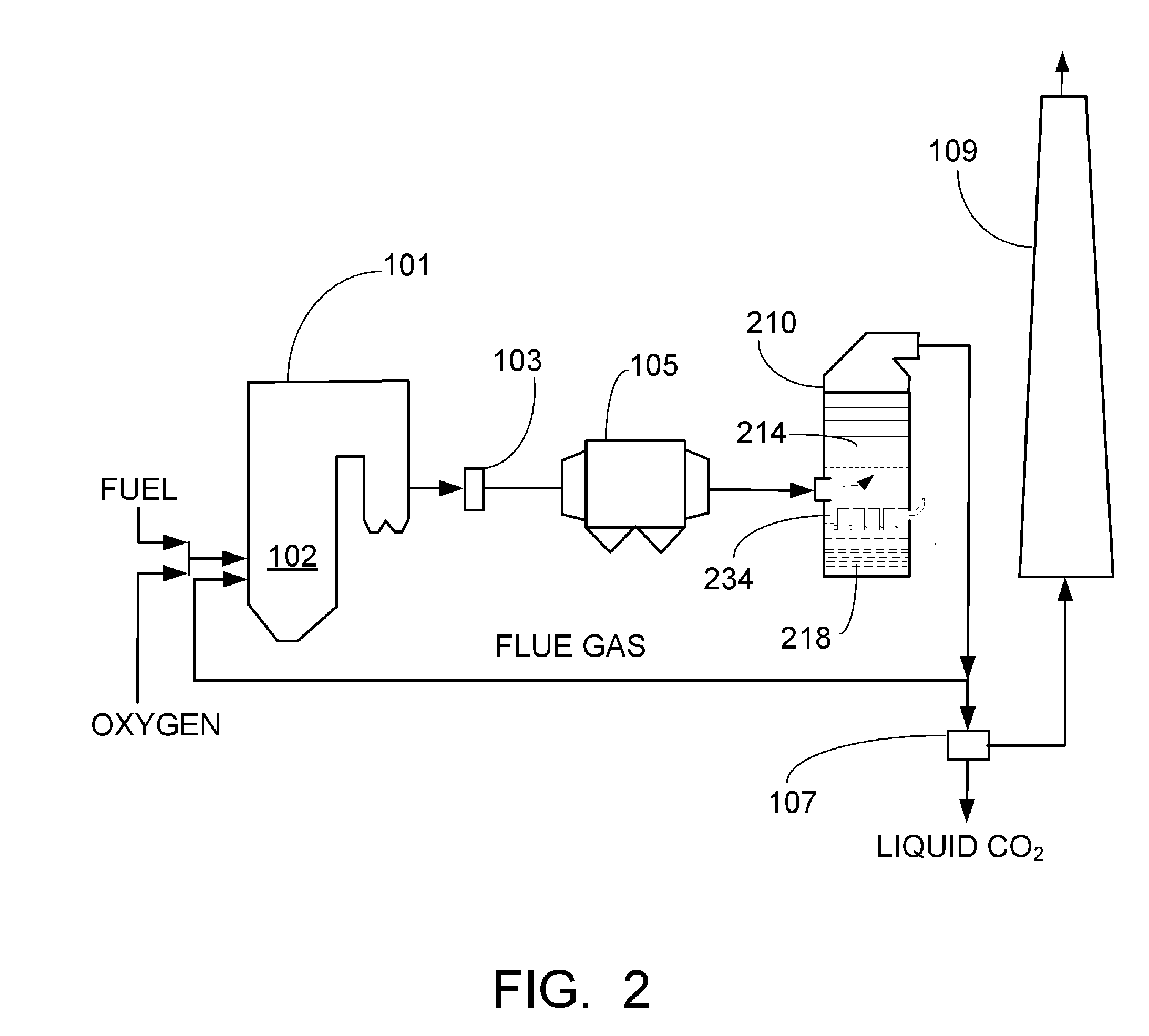Segregated in-situ forced oxidation wet flue gas desulfurization for oxygen-fired fossil fuel combustion
- Summary
- Abstract
- Description
- Claims
- Application Information
AI Technical Summary
Benefits of technology
Problems solved by technology
Method used
Image
Examples
Embodiment Construction
[0023]Reference will hereinafter be made to the accompanying drawings wherein like numerals designate the same or functionally similar elements throughout the various figures.
[0024]The present invention resides in preventing the oxidation air in an in-situ forced oxidation WFGD tower from entering the gas scrubbing zone and mixing with the flue gas while allowing the partially reacted reagent and the scrubbed products to drain from the gas scrubbing zone into the reaction zone.
[0025]Referring to FIG. 2, there is shown an oxy-fuel fired system in combination with the in-situ forced oxidation WFGD tower of FIG. 3 by way of illustration only, and the alternative structural embodiments disclosed herein will be readily recognized as viable alternatives that may be employed with an oxy-fuel fired system.
[0026]Turning back to FIG. 2, there is shown, diagrammatically, a segment of a steam electric power plant which is provided with a wet scrubbing installation for treating flue gas in accor...
PUM
| Property | Measurement | Unit |
|---|---|---|
| Fraction | aaaaa | aaaaa |
| Fraction | aaaaa | aaaaa |
| Depth | aaaaa | aaaaa |
Abstract
Description
Claims
Application Information
 Login to View More
Login to View More - R&D
- Intellectual Property
- Life Sciences
- Materials
- Tech Scout
- Unparalleled Data Quality
- Higher Quality Content
- 60% Fewer Hallucinations
Browse by: Latest US Patents, China's latest patents, Technical Efficacy Thesaurus, Application Domain, Technology Topic, Popular Technical Reports.
© 2025 PatSnap. All rights reserved.Legal|Privacy policy|Modern Slavery Act Transparency Statement|Sitemap|About US| Contact US: help@patsnap.com



